OSI Model
FREE Online Courses: Knowledge Awaits – Click for Free Access!
The OSI (Open Systems Interconnection) model is a concept for building a networking system, but it was never used due to the much popular TCP/IP model. This article talks about the different layers of the OSI model and all the roles those layers play. Here is a diagram that illustrates the different layers, the order in which they occur, and also the data units used in each of those layers:
History of OSI model
The OSI Model is a framework used to design networking systems. It enables data transmission from one device to another via a network. The OSI model was proposed by Charles Bachman of Honeywell Information Systems.
The International Organization for Standardization (ISO) created the OSI model in 1984, and it is today regarded as an architectural framework for inter-computer communications.
After ISO announced this model, then IT companies and firms around the world began using this model widely.
Characteristics of OSI model
- Consists of upper and lower layers.
- Upper layers are mainly dealt with by the software/application and the end user.
- Upper layers consist of: Application, Presentation, Session, and Transport layers.
- Lower layers are implemented in both hardware and software, and deal mainly with data transport issues.
- Lower layers consist of: Network, Data Link, and Physical layers
Why OSI model?
- This model makes it easier to recognise the evolution of new technology.
- It enables users to comprehend network communication.
- On various layers, primary functional relationships can be compared.
- Different network layers make troubleshooting easier.
Layers of OSI model
1. Physical Layer:
This layer deals with the aspect of transmission of unstructured bit streams over a physical medium (wires, fibre cables etc). It deals with the mechanical, electrical, and functional characteristics to access the physical medium. This layer handles transmission of all kinds be it physical or analog, and even the conversion between them.
The functions of Physical Layer are:
a. Transmission Mode:
Decides whether communication is in the form of simplex, half-duplex, or full-duplex.
b. Network Topology:
Decides the arrangement of devices in the network (mesh, star etc.).
c. Synchronization:
Ensures both sender and receiver operate on the same clock during transmission of bits.
d. Bit rate:
Decides number of bits transmitted per second.
2. Data-Link Layer:
This layer provides for the reliable transfer of information over the physical link. This layer is capable of sending blocks of data with the required and necessary synchronisation (so that both sides receive data at the same rate) as well as error control (Checksum, Cyclic Redundancy Check etc) and flow control (Stop and Wait Protocol etc).
The functions of Data-Link Layer are:
a. Error Control:
Detecting and/or correcting lost or damaged frames.
b. Flow Control:
Controls the flow of data to ensure the receiver does not get overwhelmed by large amounts of data.
c. Access Control:
Decides which device has control over a shared communication channel at any given time.
d. Framing:
Packs a set of bits into a package that the receiver can understand and unpack.
e. Physical Addressing:
Adds physical addresses of devices to the frames, to ensure each frame is routed correctly.
3. Network Layer:
This layer provides the upper layers with independence from data transmission and switching technologies that are used to connect systems together. It is also responsible for establishing, maintaining, and terminating connections.
Packet Switching, IP Addressing, and IP Packet Forwarding are all tasks performed by the Network Layer. Some well-known protocols used in the Network Layer are – Internet Protocol (IP), Internet Control Message Protocol (ICMP) etc.
The functions of Network Layer are:
a. IP Addressing:
Assigning unique IP addresses to different network devices.
b. Routing:
Decides the best route to transmit packets between sender and receiver.
4. Transport Layer:
This layer provides reliable, transparent transfer of data between the endpoints. It also provides services such as end-to-end recovery and flow control (Sliding Window Protocols).
The services provided by the Transport Layer are:
a. Connection-Oriented Service:
- This service involves making a connection, transferring the data, and then ending the connection.
- An acknowledgment has to be sent back to the sender for each and every packet.
- Reliable method.
b. Connectionless Service:
- No acknowledgement is sent for packets received by the receiver.
- Unreliable method.
Protocols used in the transport layer:
a. Transmission Control Protocol:
- Facilitates communication across the internet.
- It connects and maintains connections between hosts.
- TCP transmits data in smaller chunks known as segments.
- Each segment travels over the internet via multiple routes and arrives at the destination in a different order.
- At the receiving end, the transmission control protocol reorders the packets in the correct order.
b. User Datagram Protocol:
- It is an unreliable protocol since the receiver does not transmit any acknowledgement when the packet is received, and the sender does not wait for any acknowledgment. As a result, the protocol becomes unreliable.
The functions of Transport Layer are:
a. Flow Control:
Responsible for end to end flow control.
b. Error Control:
The sender ensures that the message arrives at its destination error-free.
c. Segmentation and reassembly:
When the transport layer gets a message, it splits it into several segments and assigns a sequence number to each segment, which uniquely identifies it. The transport layer reassembles the message based on its sequence numbers after it has arrived at its destination.
d. Service-point addressing:
Transport layer adds a port address to the header of the data segment, to ensure that the data is sent to the correct process running on the computer.
5. Session Layer:
This layer provides the command and control for communication between various applications. It establishes, manages, and terminates connections (in this case, sessions) between various cooperating applications.
The functions of Network Layer are:
a. Session functions:
Makes a connection which is used by processes for transmission of data, and when transmission is complete, connection is ended.
b. Dialog Control:
Allows communication between 2 devices in half-duplex or full-duplex mode.
c. Synchronization:
Ensures data loss is avoided and synchronization is maintained by stuffing the data with synchronization points.
6. Presentation Layer:
This layer provides complete independence to the application processes from the differences arising from which way each application’s data is represented (different formats of data for different applications).
The functions of Presentation Layer are:
a. Compression:
Reduction in the number of bits transmitted.
b. Translation:
Translates data from one format to another (for example, from EBCDIC to ASCII).
c. Encryption/Decryption:
Translates data between plain text and encrypted text, or the other way round.
7. Application Layer:
This Layer provides access to the OSI environment for users, and this is what we as end users see when we make use of the model depicted above.
As we can see, the OSI model has 7 layers and that was one of the reasons this model could not flourish, TCP does all of the aforementioned tasks in only 5 layers and thus gained popularity.
The functions of Presentation Layer are:
a. Directory Services
b. Mail Services
c. File Transfer Access and Management
d. Network Virtual Terminal
Flow of Data through the OSI Model
Now we will look at an example scenario of how data flows through the OSI model, by taking the example of an email being sent across a network:
- The email first reaches the application layer, where the protocol is decided, and then the data is passed to the presentation layer.
- The presentation layer compresses the data and sends it to the session layer.
- The session layer then initializes the connection in order to send the email.
- Then, the transport layer breaks the data into multiple segments and sends them to the network layer.
- Network Layer will determine the best path to send the packets of information from the sender to the receiver.
- The data link layer breaks it further into frames and delivers them to the physical layer.
- The data is then converted into a stream of bits and transmitted over the physical link.
Interaction Between OSI Model layers:
- Data is sent from one device to another via each of the OSI levels. Each of them has a link and must interact in order to function. Every layer communicates with two other layers: its subordinate layer and its peer layer.
- For example, in order to obtain information, the data link layer will collaborate with the network layer. The information will subsequently be passed on to the physical layer.
Differences between OSI Model and TCP/IP Model:
| OSI Model | TCP/IP Model |
| Interfaces, protocols, and services are clearly distinguished. | There is no discernible difference between them. |
| The bottom layer’s role is defined by the presence of physical and data connections. | It solely makes use of the connection layer. |
| The data link and physical layers are distinct. | The data link and physical layer combine to form the single host-to-network layer. |
| The smallest header size is 5 bytes. | The smallest header size is 20 bytes. |
Advantages of OSI Model:
Here are some of the major advantages offered by the OSI Model:
- Because of more layers, it helps in identifying which layer has a problem in case of any error.
- Helps to understand hardware and software requirements to build a network.
Disadvantages of OSI Model:
- These levels cannot operate concurrently and must wait for information from the preceding layer.
- Many layers provide similar or identical services.
- It can only be used as a reference model.
- The protocol fitting is tedious and time-consuming.
How does the OSI Model help network device manufacturers?
- Defines the layers so that manufacturers can design specific devices for specific layers.
- Allows interoperability of devices from different manufacturers.
- Informing users about which products work at what layer of the OSI Model.
Summary of OSI Model Layers
| Layer | Function | Protocols |
| Application | Allows you to access network resources. | SMTP, HTTP, FTP, POP3, SNMP |
| Presentation | In charge of data translation, encryption, and compression. | MPEG, ASCH, SSL, TLS |
| Session | Ensures the session creation and termination. | NetBIOS, SAP |
| Transport | Transports data from a source machine to a destination machine. | TCP, UDP |
| Network | It allows for internetworking and packet transportation. | IPV5, IPV6, ICMP, IPSEC, ARP, MPLS. |
| Data Link | Re-packages bits into frames. | RAPA, PPP, Frame Relay, ATM, Fiber Cable, etc. |
| Physical | Provides mechanical and electrical media for transmission of signals. | RS232, 100BaseTX, ISDN, 11. |
Conclusion
To summarise, this article gives an in-depth view of the functions and characteristics of all the layers in the OSI model of Computer Networks, as well as a real-life example of a web browser showing how those layers would function in accordance with the OSI model. The article also takes a look at how data flow occurs in the OSI Model, as well as a comparison with the TCP/IP model, and how the OSI Model helps device manufacturers.
We work very hard to provide you quality material
Could you take 15 seconds and share your happy experience on Google
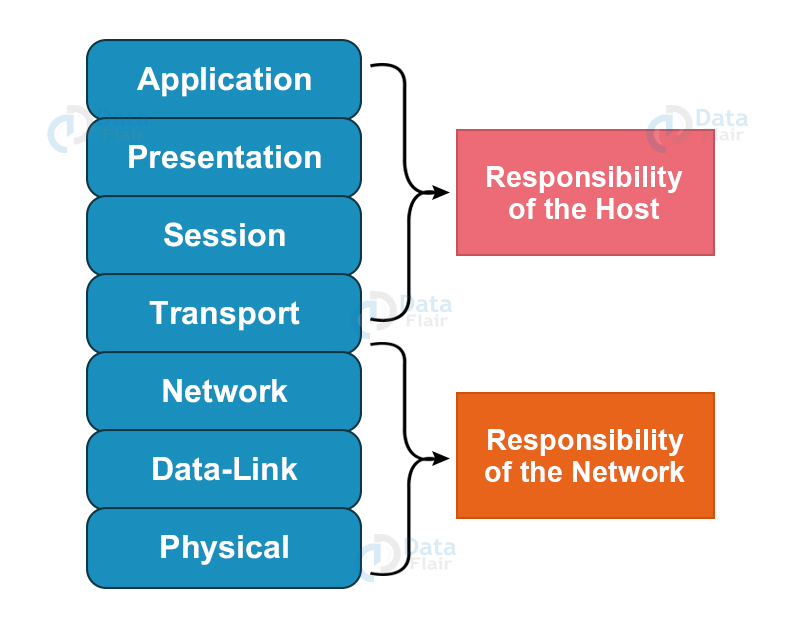

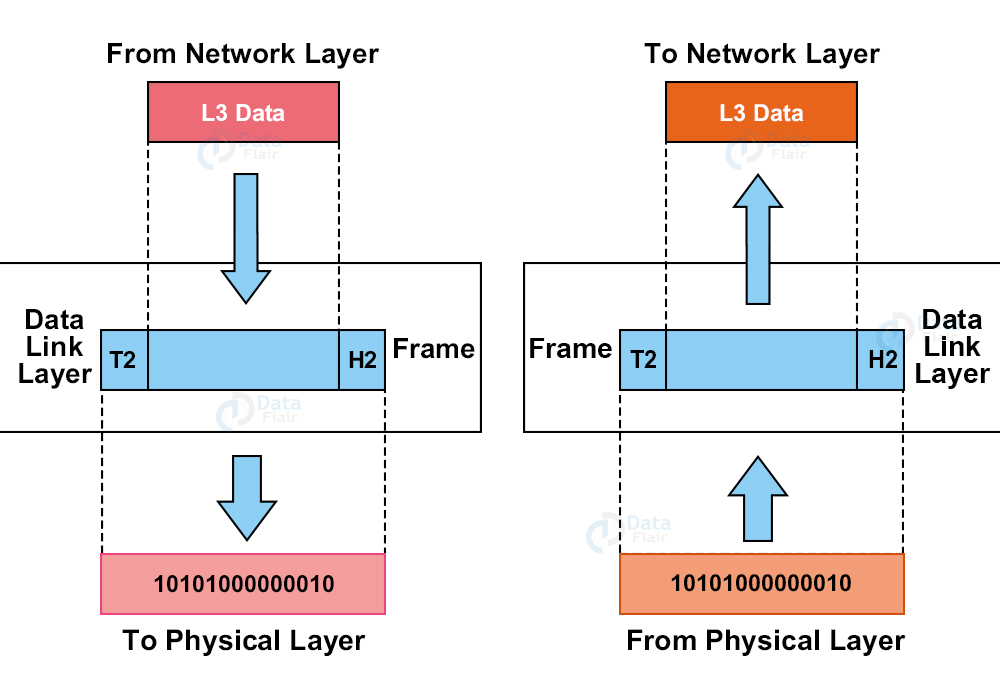

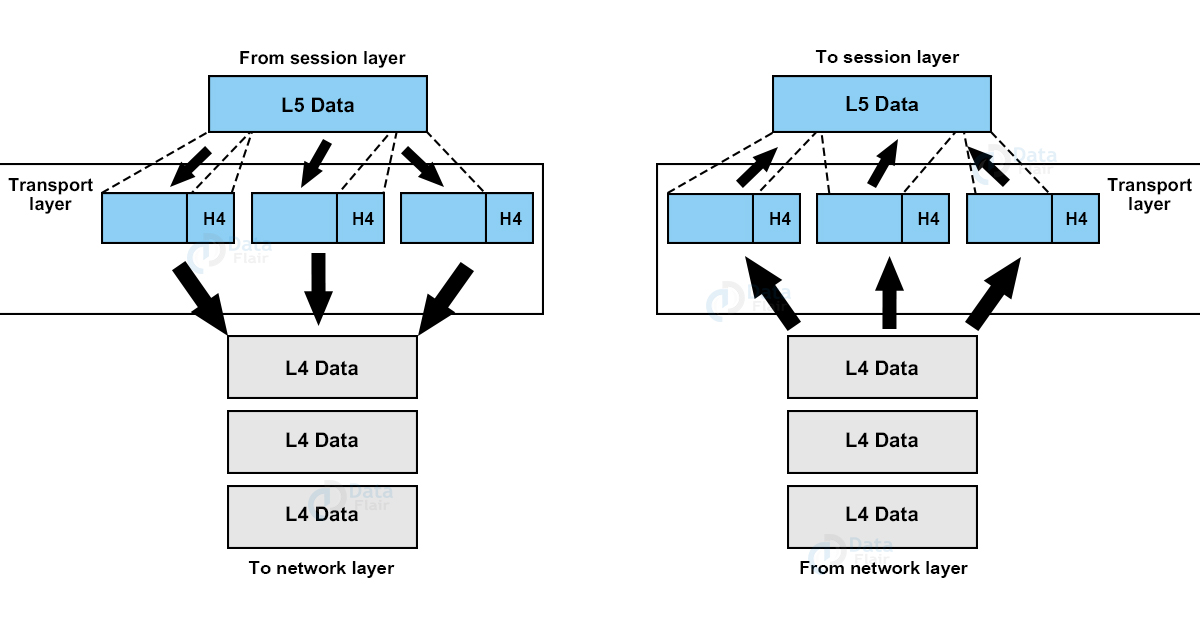

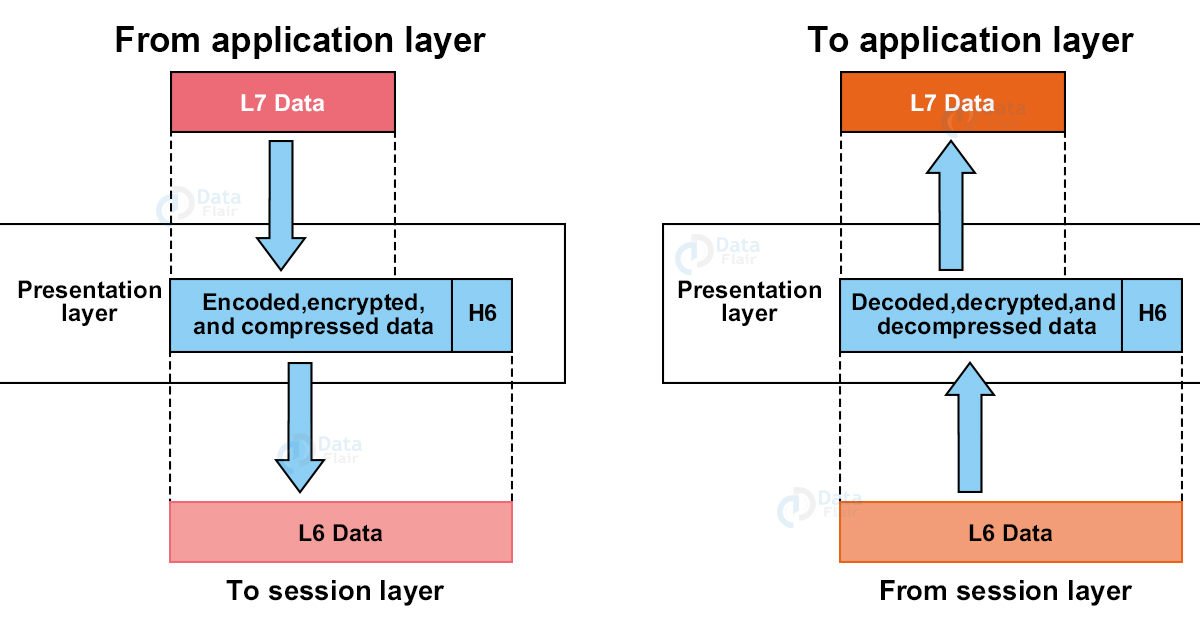
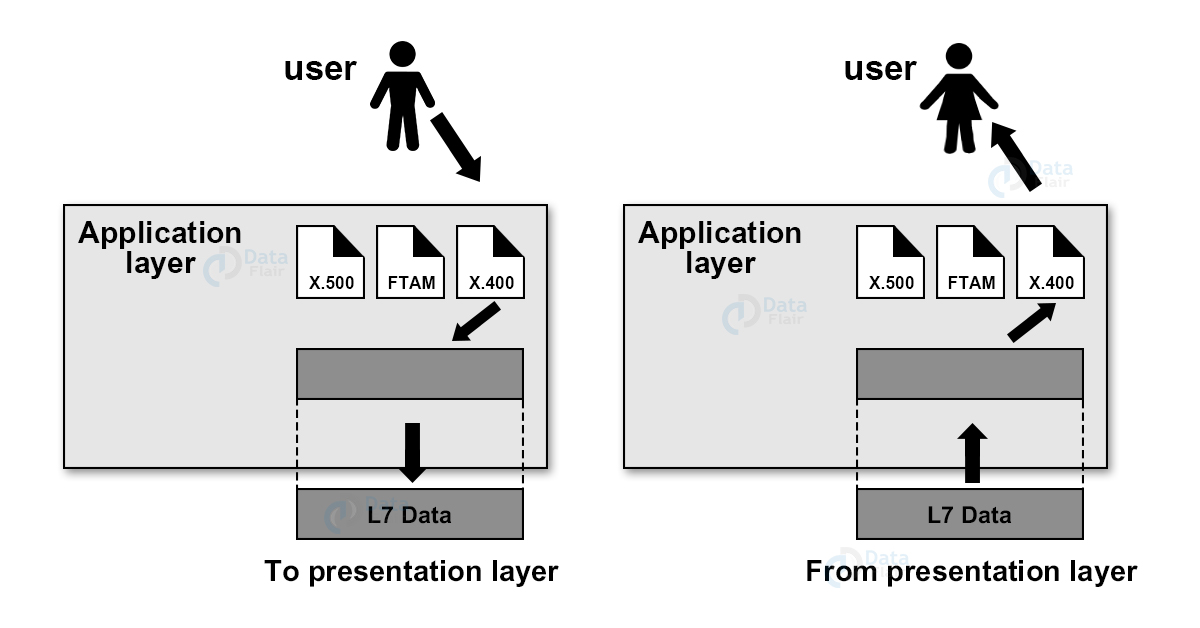


It’s very helpfull simple nd easy to understand thank u soo much 🙏